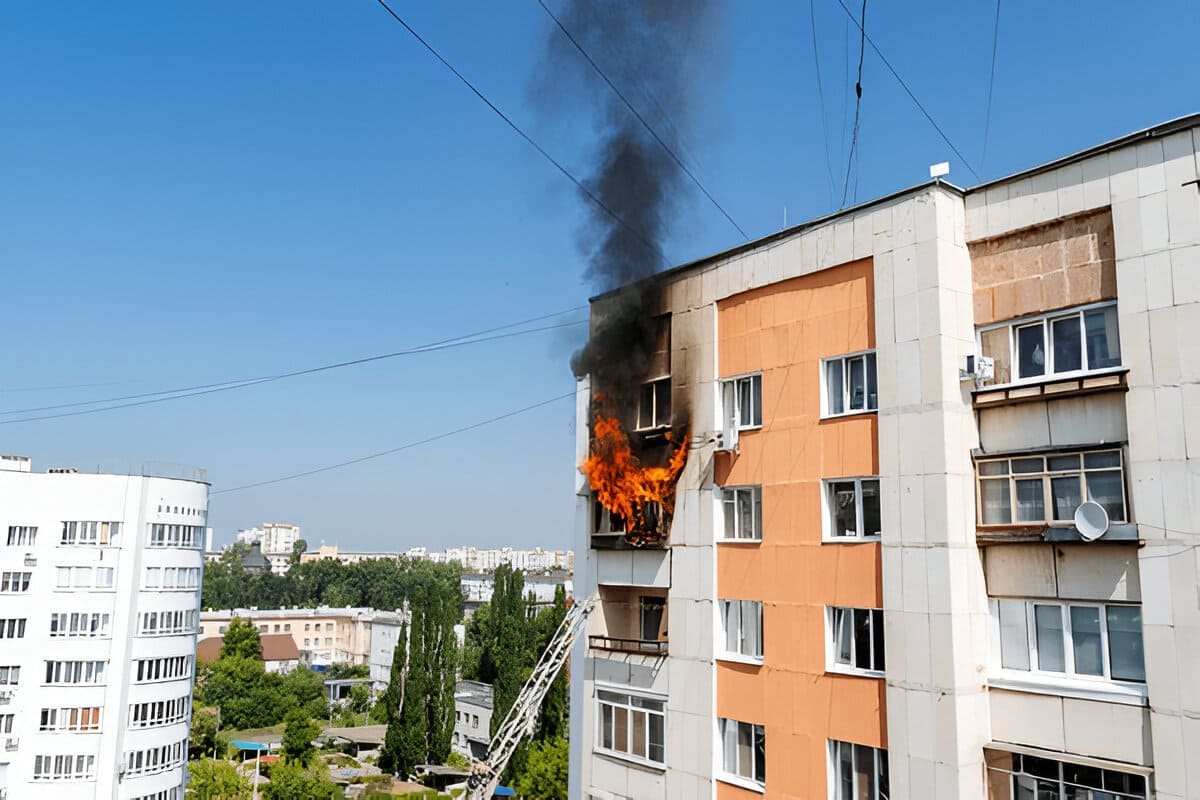The Shocking Truth About Electrical Fires and Copper Purity

Electric fires have been a significant concern in India, with various incidents highlighting the importance of fire safety measures.
From July to December 2023, a total of 112 fire incidents were reported across India. Shockingly, these incidents resulted in 131 fatalities and 164 injuries. Residential areas bore the brunt of 40 incidents, while commercial complexes experienced 72 fires. The primary culprit behind these fires was electrical short circuits, accounting for 58 incidents, followed closely by electrical faults (49). Despite the grave consequences, a significant number of incidents remain of unknown origin.(Source ICAI)
According to the Mumbai Fire Brigade, 70-80% of fires in Mumbai are attributed to electrical short circuits, often due to substandard wiring and poor maintenance.
Here are some notable examples:
AMRI Hospital Fire (2011): A fire broke out at a hospital in Kolkata, claiming 95 lives. The incident was attributed to a short circuit and inadequate fire safety measures.
Reference: Wikipedia
Borivali Fire (February 2022): A fire occurred in a residential building, Paradise Heights, due to electric wiring issues in the electric duct. Thirty-five people were evacuated, and no injuries were reported.
Reference: India Today
Shakarpur Fire Incident (November 2023): A five-story building caught fire due to a short circuit in the parking area on the ground floor. One woman, Anita, died, and 25 people were rescued by the Delhi Fire Service. Firefighters faced challenges due to lack of water, low-hanging electricity wires.
Reference: NDTV
Krishna Nagar Fire Incident (May 2024): A massive fire broke out at a residential building, killing three people. Thirteen people were rescued, with the cause attributed to electrical issues.
Reference: The Indian Express
Rajkot Gaming Zone Fire (May 2024): A recent incident in Rajkot resulted in 29 deaths, including 9 children, due to faulty wiring and inadequate fire exits.
Reference: Wikipedia
Electrical fires can occur due to improper wiring practices, including:
A. Overloaded circuits: Exceeding the recommended ampacity of wires or circuits.
Examples of overloaded circuits include:
- Plugging too many devices into a single outlet or circuit.
- Using extension cords or power strips beyond their rated capacity.
- Adding high-power appliances (e.g., heaters, air conditioners) to an existing circuit without ensuring it can handle the increased load.
- Running multiple high-wattage devices simultaneously on the same circuit.
B. Faulty or damaged wiring: Cracks, cuts, or damage to insulation or conductors.
Examples of faulty or damaged wiring include:
- Frayed or cracked insulation
- Cut or chewed wires (e.g., by pets)
- Loose or corroded connections
- Wires pinched or crushed by furniture or other objects
- Outdated or deteriorated wiring (e.g., old homes with outdated electrical systems)
These issues can cause electrical shocks, fires, or equipment damage. Regular inspections and maintenance can help identify and address wiring problems.
C. Incorrect wire sizing: Using wires that are too small for the intended load.
Examples of incorrect wire sizing include:
- Using 2.5 sq mm wire for a 25-amp circuit (should be 4 sq mm).
- Installing thin wires for high-power appliances (e.g., electric dryers, ovens).
- Using wires with inadequate ampacity for long-distance runs.
Incorrect wire sizing can lead to:
- Overheating
- Voltage drop
- Increased risk of electrical fires
It's essential to follow electrical codes and standards for wire sizing to ensure safe and efficient electrical systems.
D. Loose connections: Poorly secured connections can cause arcing or overheating.
Examples of loose connections include:
- Loose screws or clips on electrical outlets or switches.
- Poorly secured wire nuts or connectors.
- Backstab connections that have come loose over time.
Regular inspections and tightening connections can help prevent these issues.
E. Improper grounding: Inadequate or missing grounding can lead to electrical shocks or fires.
Examples of improper grounding include:
- Missing or inadequate grounding rods.
- Loose or corroded grounding connections.
- Using ungrounded outlets or equipment.
- Improperly installed grounding systems.
Proper grounding is essential for ensuring electrical safety and preventing accidents.
F. Impure copper can cause fires in electrical systems due to several reasons:
- Increased Resistance: Impurities in copper can increase its electrical resistance, leading to excessive heat generation.
- Overheating: When impure copper heats up, it can cause the insulation around the wire to melt or degrade, potentially leading to a short circuit or fire.
- Spark Generation: Impurities can also cause sparks or arcing, which can ignite nearby flammable materials.
To minimize fire risks, it's essential to use high-purity copper in electrical applications.
The Importance of Copper Purity: Why It Matters
Copper is a highly versatile and widely used metal in various industries, including electrical, plumbing, and manufacturing. Its high electrical and thermal conductivity, corrosion resistance, and ductility make it an ideal material for many applications. However, the purity of copper plays a significant role in determining its performance, efficiency, and lifespan.
Why Copper Purity Matters
Copper purity is crucial in electric cables, impacting performance, efficiency, and safety.
Key benefits include:
- Electrical Conductivity - High-purity copper (99.9% or higher) ensures optimal electrical conductivity, reducing energy losses and increasing efficiency in electrical applications.
- Safety - In electrical applications, high-purity copper reduces the risk of electrical fires, overheating or shocks due to its stable and efficient conductivity. Pure copper is more resistant to corrosion, which can lead to equipment failure, leaks, or other issues in plumbing and industrial systems.
- Durability - Pure copper is more durable and less prone to cracking or breaking, ensuring longer equipment lifespan and reduced maintenance costs.
- Performance - Copper's high thermal conductivity is crucial in applications like heat exchangers, radiators, and HVAC systems. Impurities can reduce this conductivity, compromising system performance. Hence the purity of copper assures signal integrity and High-speed data transmission.
Conclusion
In conclusion, copper purity is essential for ensuring optimal performance, efficiency, and safety in various applications. By specifying high-purity copper, industries can minimize energy losses, reduce maintenance costs, and extend equipment lifespan. Additionally refer to the guidelines informed in IS 3961 Part 5 for selection of cable depending on load condition and enhance the safety of installations.
In India for electric cables all the cable standards inform copper conductor to be as mentioned in IS 8130:2013, IS 613:2000 and IS 191:1980
By prioritizing copper purity, industries can ensure reliable, efficient, and safe electrical transmission.

